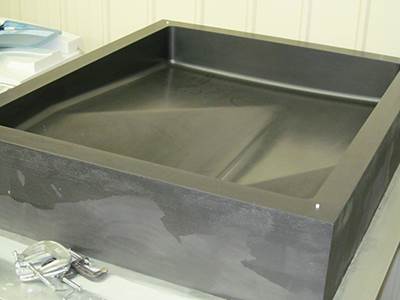Ascent Tooling Group ascends via innovation
The world’s largest metal and composite moldmaker has a new name and continues to make a name for itself in closer control of large-part dimensional tolerance.
As the composites industry has grown, so have its toolmaking specialists. A case in point is the Ascent Tooling Group. Part of AIP Aerospace (AIPA, Santa Ana, CA, US). Up from 600 to 900 employees and reaping annual revenues of US$200 million in just five years, it is reportedly the world’s largest aerospace tooling provider.
Formed in 2012 when American Industrial Partners (AIP) purchased the US holdings of Hampson Aerospace, AIPA includes three well-known aerospace tooling-related companies: Coast Composites (Irvine, CA, US), Odyssey Industries (Lake Orion, MI, US) and Global Tooling Systems (GTS, Macomb Township, MI, US), as well as aerospace part fabricators Texstars LLC (Grand Prairie, TX, US) and Composites Horizons LLC (Covina, CA, US). In September 2014, the Ascent Tooling Group was formed, which more fully integrates Coast Composites, Odyssey and GTS.
“Combined, these companies offer our customers the widest set of capabilities, full vertical integration to control cost and schedule, and the largest capacity in the industry,” asserts Paul Walsh, Ascent’s president and COO. The group produces metal and composite tools ranging in size from small to some of the largest and most complex tools in the industry, for manufacture of composite fuselages, wings, frames and stiffener parts. The Ascent Tooling Group has supplied molds for virtually all major aerospace composite programs, most recently the tooling for more than half of the Airbus (Toulouse, France) A350 XWB’s outer surface, including the forward fuselage, wings, center wingbox and sections of mid- and aft-fuselage as well as stringer, frame and nacelle tools. Invar was the choice for the cure tools, with steel or aluminum selected for trim tools and other tool types. Ascent also is involved in major tooling programs for The Boeing Co.’s (Chicago, IL, US) 787, 737 and 777, the Lockheed Martin (Ft. Worth, TX, US) F-35 and Northrop Grumman’s (Falls Church, VA, US) share of the F-18, among others (see "Tooling for composite: Evolutionary trajectory" under “Editor's Picks”).
Modular metal tools with dimensional accuracy
The company’s growth reflects its focus on maintaining best operational practices that result in very accurate tools. If part accuracy requirements are 1.27 mm, for example, the tool must have a dimensional accuracy of 0.64 mm or less. “The tool has to be more precise than the part itself,” says Walsh. Maintaining that kind of accuracy over a large expanse of metal tool face is very difficult, but the company has developed operational strategies to cope. To ensure tight tolerances, Walsh says Ascent has developed (at both Coast Composites and Odyssey) its own sophisticated system to compensate for real-time temperature changes within the tool materials during machining. Accuracies reportedly can be maintained to ±0.254 mm on tool structures up to 20m or more in length. Further, all of Ascent’s CNC machines include internal cooling systems to prevent heat-induced “growth” of the machine’s metal parts during long hours of operation.
“On a 10m-long steel tool, a temperature swing of 10°F can be enough to throw the tool out of spec, and 10° swings are common even in air-conditioned factories,” explains Walsh. On-machine inspection is another key piece of dimensional control, by means of inspection probes and software from Renishaw Plc(Gloucestershire, U.K.) installed on each machining center (see “Laser encoder enables highly accurate cutting of critical wingskins" under "Editor's Picks,” at top right).
Tight tolerances are especially critical on Invar tools, because Invar is selected precisely for its ability to maintain dimensional accuracy during part processing. “We build more Invar tools than anyone,” Walsh contends. Ascent Tooling Group reportedly buys more than 1 million kg per year of the iron/nickel alloy, prized for its very low coefficient of thermal expansion (CTE), which is close to that of carbon/epoxy prepreg. Its relatively high cost means Invar is typically chosen for performance-critical production tools, with more complex shapes.
To enable transport of the more enormous Invar tools — for example, the wingskin tools for the Airbus A350 XWB in Illescas, Spain (see "The Plane in Spain" under “Editor's Picks”) — tools must be modular. “The tool is designed, fabricated and machined in modular sections around typical transportable sizes,” says Walsh. “Shipping is a logistical test.” Indeed, Walsh has many tales of tool shipments via multiple transportation modes, including a rush transport that involved the massive Antonov An-225 cargo plane. But after tool segments are delivered to a customer via truck, ship or air transport, the very real engineering challenge, he maintains, is joining “the finished sections together to maintain both accuracy and vacuum integrity.”
For that, Coast Composites’ has developed its patented “deep penetration” laser welding, which joins Invar facesheets. In preparation, tool modules are brought together, aligned as closely as possible using alignment features and then dimensionally verified. The backup structure is welded first, using traditional arc-welding technology. Then, a traveling welding robot laser-welds the seams between the Invar facesheets as it travels the length of each seam/joint. According to Walsh, the very narrow focus of the laser beam minimizes the heat-affected zone and the process speed does not cause distortion or shrinkage of the metal. The process requires neither filler metal nor post-weld heat treatment. “We’ve done 72 laser-welded joints on critical wing tools over the past seven years with no vacuum leakage,” Walsh claims.
A variety of composite tools
On the composites side of the house, relates Tim Shumate, AIPA’s director of business development, the company consolidation has resulted in a composites “center of excellence” at Coast’s Santa Ana location that includes ample cold storage, a 4m by 15.2m autoclave, large oven, automated cutting machine and more. Coast’s composites group has developed tooling solutions for both prototype and production composite tools from a wide palette of materials and processes. “Sometimes, I think our industry doesn’t promote composite tools strongly enough — they offer many benefits,” Shumate contends, pointing out, “They heat up quicker than a metal tool because of lower thermal mass, which means you can turn your part quicker, thus creating more autoclave capacity, in theory. This can be key on a high-rate program, since it lowers capital costs.”
Another driver for composites is weight. Shumate describes Coast’s massive fuselage tool for Boeing’s 787, produced using carbon/bismaleimide (BMI) material from Cytec Aerospace Materials (Tempe, AR, US) as a series of machined segments that, when assembled, formed the barrel over which fuselage sections 47/48 were fiber-placed. The high-temperature-capable tool has performed well, and was designed for production cycles at temperatures and pressures up to 177°C and 6.89 bar.
“On the 787 tooling, the rotational mass of a large fuselage tool used in a fiber placement machine would have been a problem if made with Invar. Tool mass can also be a factor in moving the tool through a shop,” says Shumate.
Composite tooling also can reduce overall tooling cost for rate tools because multiple additional tool copies can be pulled from the original master. Each metallic tool, on the other hand, must be remade at the same cost as the original. Shumate elaborates: “A composite tool has several cost components: the master, the facesheet, the backup structure and finishing/machining. The material suppliers are focused on the facesheet. We are looking at the cost of all of the components, to get a better total cost reduction.”
Coast Composites is in the process of evaluating new tooling materials. “For rate production tools, used to cure 177°C structural parts, BMI has the history and proven performance, and as a result has been the preferred material for years,” says Shumate. That said, BMI’s out life and handling could be improved. And although BMI tooling material suppliers are addressing these issues in the near term, and making good progress, Shumate says Coast is looking into an alternative, benzoxazine, from Henkel AG & Co. KGaA (Bay Point, CA, US), which is prepregged and distributed through Airtech International Inc.(Huntington Beach, CA, US, see “Learn More”).
Other alternatives include Cytec’s BMI DForm tooling prepreg, a slit fabric prepreg that reportedly improves conformability and reduces layup time by 75% yet delivers a high-quality surface finish; CFOAM carbon foam from Touchstone Research Laboratory (Triadelphia, WV, US); and lower-cost, optimized tool infusion processes.
Capital investment, turnkey future?
Ascent Tooling Group employs many machining centers from many suppliers, including Henri Liné (Granby, Quebec, Canada) and Handtmann CNC Technologies Inc. (East Dundee, IL, US). It recently committed US$20 million to purchase eight new high-speed gantry-type units from Parpas America Corp. (Bloomfield Hills, MI, US).
Ascent Tooling Group’s sister entity, the Ascent Integration & Automation Group, combines automated drill and fastening system specialist Brown Aerospace (Kimball, MI, US), the advanced systems division of waterjet specialist Flow International, now Flow International Corp.(Jeffersonville, IN, US) and Ascent Integration, which is dedicated to factory and assembly line integration. This group will leverage Ascent Tooling Group’s fabrication and assembly-jig expertise to offer customers integrated, turnkey assembly line designs and factory automation. “We recognize that many of our customers are looking for a total manufacturing solution, beyond simply a tooling solution,” says Brian Williams, CEO of AIPA. “Linking full-line integration and factory automation with our tooling technology allows us to provide unique solutions that greatly streamline aircraft manufacturing.”
Related Content
Saint-Gobain, Roctool join efforts to boost composite 3D textile preform parts manufacturing
3D automated knitted preform layup technology and heat and cooling technologies for additional curing efficiency open a new window of application opportunities for composite and thermoplastic parts.
Read MoreMaterials & Processes: Resin matrices for composites
The matrix binds the fiber reinforcement, gives the composite component its shape and determines its surface quality. A composite matrix may be a polymer, ceramic, metal or carbon. Here’s a guide to selection.
Read MoreSafran Nacelles Morocco installs large autoclave, doubles cleanroom per development plan to increase production rates
Extension of 6,000 square meters dedicated to Gulfstream G700/G800 production, groundwork laid to digitalize processes and reduce environmental footprint.
Read MoreMaterials & Processes: Tooling for composites
Composite parts are formed in molds, also known as tools. Tools can be made from virtually any material. The material type, shape and complexity depend upon the part and length of production run. Here's a short summary of the issues involved in electing and making tools.
Read MoreRead Next
The Plane in Spain
Site tours provide a rare glimpse into the Iberian Peninsula’s aerospace composites sector, with a special focus on Airbus’ activities at Illescas.
Read MoreBenzoxazines for OOA tooling
Can infusible formulations of this newer resin system produce aerospace-capable tools?
Read MoreTooling for composites: Evolutionary trajectory
New technologies and improved methods keep up as tools get bigger and more complex and toolmaking gets ever more challenging.
Read More

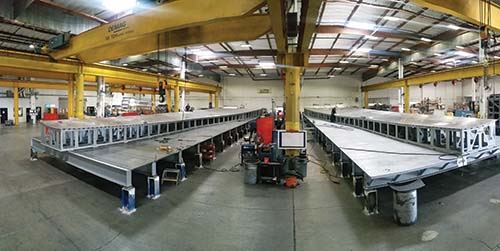
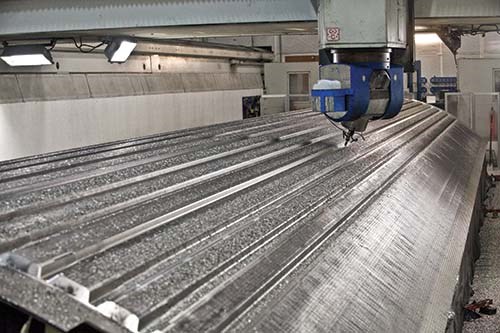
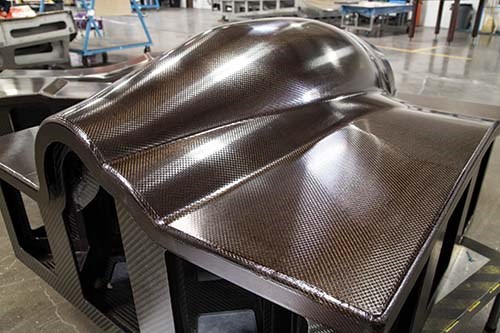
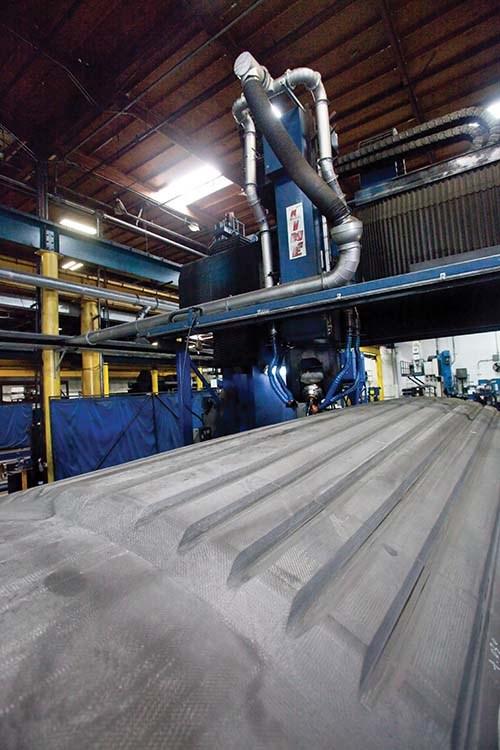
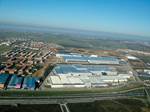

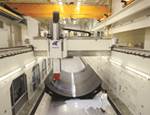















.jpg;maxWidth=300;quality=90)








